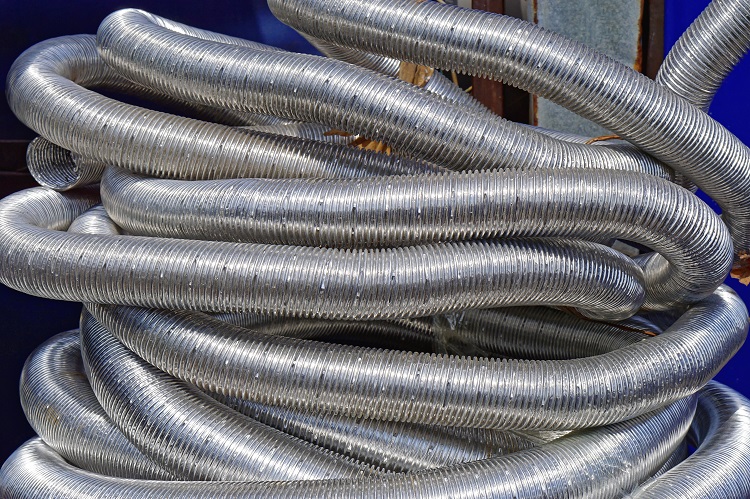When investing in upgrades for your home, it’s natural to think about the aesthetic appeal: the paint colours, the light fixtures, the plush couch... but how much thought do you spare for those unseen elements like ductwork that actually enhance your living experience? Do we regard them merely as items on an inspector's checklist or consider their importance in building a comfortable, efficient home? Well, one of these elements - ducting - is worth your attention and this blog is aimed at helping you understand just how crucial a role it plays.
Ducting, in particular flexible ducting, can be a game-changer when it comes to creating an efficient home environment. It allows for precise temperature control, energy efficiency, and breathability within your home. Most importantly, well-installed and maintained ducting can save you a bundle in long-term repair and replacement costs. To help you get it right, we delve deep into the world of flexible ducting in this exhaustive guide.
Let this not be seen as an "afterthought". By avoiding the invisible, are we not missing out on something that could be pivotal in our pursuit of comfort, design and a more sustainable and cost-efficient lifestyle? Let's demystify flexible ducting - understanding its nitty-gritty and mastering its optimal installation and maintenance for longer life.
Why Opt for Flexible Ducting?
Imagine living in a house where the air we breathe is fresh, the indoor temperature is always optimal, energy consumption is efficient, and the reoccurring costs and efforts are minimal. Doesn't it sound like paradise? This could be your reality if you choose flexible ducting over traditional ducting systems.
Flexible ducting systems, true to their name, are renowned for their adaptability. They can navigate through complex architectural designs without hampering aesthetics or functionality. Plus, because they’re insulated, they prevent excess heat transfer, saving you substantial energy and money in the long run.
With flexible ducting, you enhance not just the indoor environment but also the overall health and efficiency of your home. It hits the sweet spot of balancing both convenience and function.
When and How to Install Your Flexible Ducting
The best time to install flexible ducting is during the construction or remodelling phase of your house. However, it's realistic to retrofit it in an existing setup too. The key to an efficient installation is straightforward: adhere to manufacturer guidelines and building regulations.
Remember, wrong installation goes beyond just being aesthetically unappealing. It could lead to air leakages, higher energy consumption, and substantial reduction in the longevity of the system itself. As daunting as the task may seem, with a thorough understanding and perhaps a professional's assistance, ensuring optimal installation is achievable
What Regular Maintenance Entails
Maintenance, often seen as a chore, is vital in upholding the life and efficiency of your ducting system. It involves regular inspection for air leaks, dust and mold removal, and periodic change of filters.More proactive than reactive, regular maintenance enhances the durability of the system, facilitates optimal airflow and energy efficiency, and assist in maintaining clean air within your home.
Who should Install and Maintain Your Ducting?
While flexible ducting installation might seem like a tempting DIY project, we strongly suggest considering professional installers. As mentioned earlier, improper installation can lead to a host of issues that could be easily avoided with professional oversight.
For maintenance too, the role of a professional cannot be overstated. Sure, there are tasks you can do (like changing filters), but let’s leave the thorough check-ups to the experts. With their technical skills and experience, professionals ensure the key elements of the system are functioning at their best.
The Pros and Cons of Flexible Ducting
Like any good home improvement decision, consider the pros and cons of flexible ducting. Pros include: easy installation, versatility, energy efficiency, and cost-effectiveness. Yet it has a few cons too, such as vulnerability to sharp objects and pests, potential for air leak if not properly installed, and reduced efficiency if duct length is overextended.
Knowledge is power - understanding the challenges can help you make an informed decision, and equip you better to mitigate any potential issues.
The Future of Flexible Ducting
Flexible ducting isn’t a new-fangled invention but its popularity is ever-growing. With its promise for insulation efficiency, energy savings, and optimal air circulation, it seems poised to become a mainstream element in modern homes.
We hope this guide aids potential choices in your home improvement adventure. The key lies not only in choosing flexible ducting but in ensuring its proper installation and dedicated maintenance. With this, you can leverage the numerous benefits of this simple yet effective system. After all, the secret to a comfortable, efficient, and sustainable home might be hiding above your ceilings and within your walls. Make flexible ducting a part of your home improvement story and embrace a change that doesn't merely look good, but feels good too!


0 comments :
Post a Comment